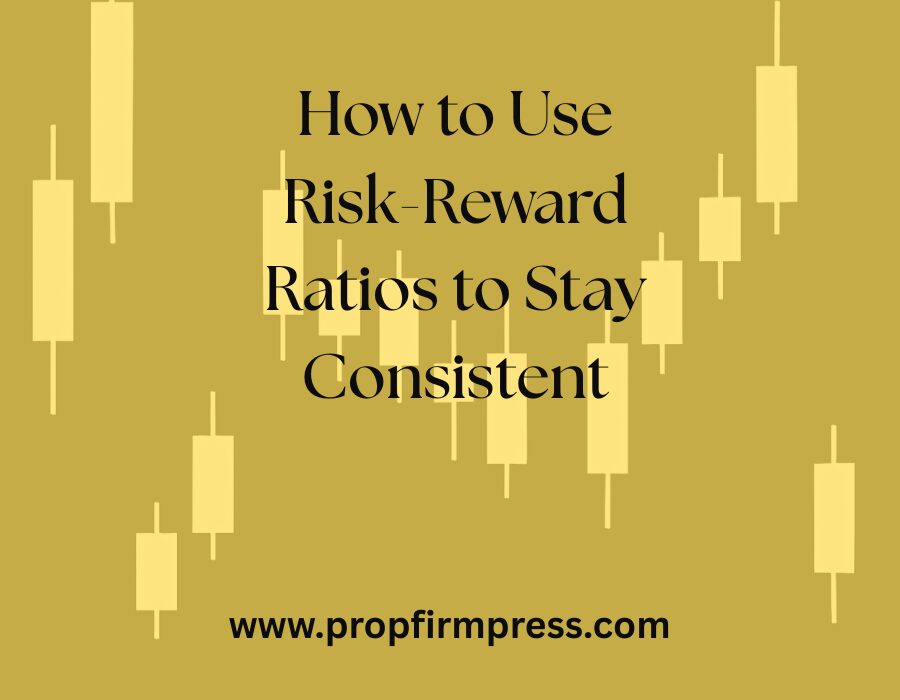Why Risk-Reward Is the Core of Consistent Trading
Most traders obsess over win rates, entry signals, and indicators—but the single most important factor in consistent profitability is risk-reward. Whether you’re trading forex, futures, or using a prop firm account, mastering this ratio determines how long you stay in the game and whether you ever get funded. Prop firms like Instant Funding and Bulenox don’t care if you win every trade—they care that you stay within risk limits while hitting targets. Risk-reward is how you do that.
What Is a Risk-Reward Ratio?
The risk-reward ratio (R:R) compares how much you’re willing to risk on a trade versus how much you expect to gain. For example, risking $100 to potentially make $300 is a 1:3 risk-reward ratio.
- 1:1 R:R – Risking and gaining the same amount
- 1:2 R:R – Doubling the potential reward over risk
- 1:3 R:R – Tripling the reward per dollar risked
Having a high R:R doesn’t mean every trade wins—it means your winners can outweigh your losers in the long run.
Why Prop Firms Care About R:R
Most prop firms limit the number of trading days, drawdown, and max risk exposure. A trader with poor risk-reward will need an extremely high win rate to succeed. A trader with good R:R can win fewer trades but still pass. For example:
- A trader with 50% win rate and 1:2 R:R can be profitable over time.
- A trader with 80% win rate and 1:0.5 R:R may still fail if one loss wipes out multiple wins.
Firms like The Legends Trading even offer no daily drawdowns, encouraging traders to be more selective with entries rather than trading frequently with poor risk structure.
How to Calculate Your R:R in Real-Time
Before placing a trade, always ask:
- Where is my stop-loss?
- Where is my realistic take-profit?
- Is the reward at least 2x the risk?
Use trading platforms like MetaTrader, NinjaTrader, or TradingView to draw and measure potential setups in advance. Alerts and OCO orders help automate this process during prop firm challenges.
Tools to Track Your Risk-Reward
- Prop Firm Press Journals: Log each trade’s R:R ratio to identify patterns
- Challenge Recap Sheets: Review performance weekly to see if R:R needs adjusting
- Daily Risk Planner: Set pre-defined trade size and SL levels before market open
Download printable versions of these tools at PropFirmPress.com.
What R:R Works Best for Prop Challenges?
Here are general targets used by funded traders:
- Forex: 1:2 or 1:3 per trade using swing setups
- Futures: 1:1.5 or 1:2 with tighter stops during volatile sessions
- Scalping: Can work with 1:1.2, but execution must be near perfect
Try to average 1:2 across your evaluation, even if you occasionally accept smaller R:R on ultra-high probability trades.
Common Mistakes That Destroy R:R
- Moving stops to breakeven too early and getting wicked out
- Letting losers run without adjusting or accepting the loss
- Taking small profits due to fear and cutting winners short
- Overtrading to make up for small gains
Use a trading checklist that includes “Minimum R:R met?” before each entry.
Case Study: Passing with 40% Win Rate
One trader passed Funded Futures Network with a 40% win rate—but every trade had a 1:3 ratio. 4 losses of -$100 each = -$400. 2 wins of +$300 each = +$600. Net gain = $200. With prop firm rules favoring capped loss and uncapped gain, this strategy led to a funded account in under 20 days.
Why Journaling R:R Improves Consistency
By logging your R:R daily, you create an internal system of discipline. Prop firm evaluations often punish inconsistency more than poor performance. If you risk 1% one day and 5% the next, you’re more likely to blow the account. R:R metrics keep you accountable and force you to align with firm rules.
Conclusion? No—Consistency.
Risk-reward is not just a number. It’s a habit, a mindset, and a framework. If you want to stay funded, grow your capital, and avoid resets, your R:R must be locked in. And that comes through planning, journaling, and reviewing—day after day.
